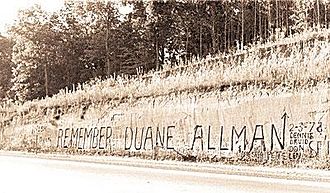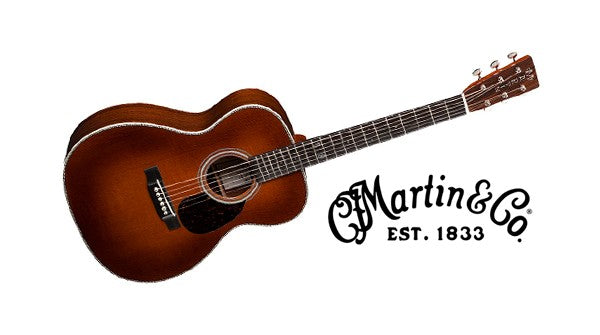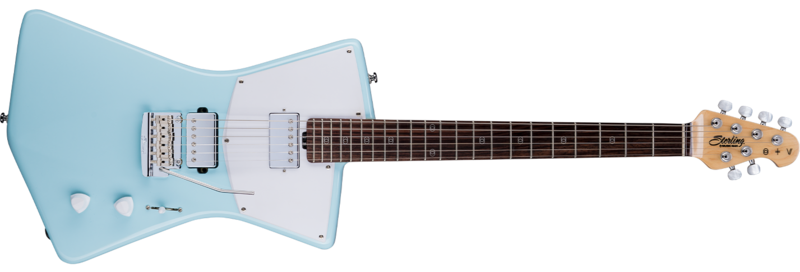Your Cart is Empty
Great Guitarists Who Built Their Reputations Playing Brilliant Rhythm Guitar
August 12, 2020 10 min read
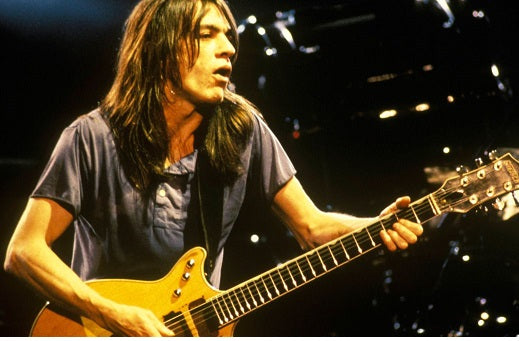
When we talk about great guitar playing, usually we are referring to lead players whose technique, note choice and feel put them in a class by themselves. But, too often we forget the great rhythm players who provide the harmonic backdrop that makes great lead playing possible, the musical glue that holds most rock, alternative and metal music together.
It’s not that the players on this list can’t or don’t play leads -- they often do and with spectacular results. For this list we have chosen musicians who are more likely to come up with a great chord progression, arpeggio line or an innovative use of effects that takes a song into completely new territory, rather than simply rip through a quick lead. These guitarists play such innovative rhythm parts, they actually have the same musical effect as great leads, astonishing the listener with an incredible display of skill and musicality.
Most of the Guitarists on this are not just great players. They also serve as the main creative forces in whatever musical projects they are involved in. As composers and songwriters many of the guitarists we’ve chosen are responsible for some of the biggest hits and best known cult-anthems of their respective generations.
Johnny Marr - The Smiths, Modest Mouse and others

Whether you play guitar or not, Johnny Marr’s innovative playing and songwriting is likely to be seared into your memory. When the Smith’s anthem ‘How Soon is Now’ reappeared as the theme to the popular TV showCharmed, it reminded us all of the incredible music that Marr made with Morrissey and The Smiths in the 1980‘s.
Marr’s style of weaving intricate bass lines into rapid fire chord changes, sprinkled with broken chords and arpeggios, has been extremely influential in the music world. In fact, bands like Radiohead, REM and U2 list The Smiths and Johnny Marr in particular as having been among their most important influences.
Since splitting ways with Morrissey and company, Marr has played with bands such as Modest Mouse, The Pretenders, TheThe and Electronic with New Order’s Bernard Sumner. He has also been a sought-after session player, recording with artists including Pet Shop Boys, Bryan Ferry, Billy Bragg, Kirsty MacColl, Black Grape, Jane Birkin, Talking Heads, and Beck.
An entire generation of British guitarists took their cues from Johnny Marr. As Noel Gallagher of Oasis said of him in aRolling Stone article: "I've been in the studio with him, and there's nothing he cannot do on guitar... The man's a f**kin' wizard."
Watch the video below for a great example of Marr’s amazing rhythm playing:
Barbarism Begins at Home
Peter Buck - REM
Peter Buck of REM is one of the most underrated guitarists of the 80‘s and 90‘s. His ability to create the perfect sonic accompaniment to Michael Stipe’s lyrical brilliance has been nothing short of uncanny, giving him millions of admirers around the world. Whether he’s wailing away on his signature Rickenbacker, plucking at an electric sitar, strumming a 12-string acoustic, or layering tracks using a variety of acoustic instruments including his Gibson mandolin (as heard in the REM classicLosing My Religion), Peter Buck has been known to cook up a sonic storm with playing so intricate that his work with REM has been called America’s answer to The Smiths. And just like The Smiths, REM spawned generations of Alternative bands that came after them. As Billy Corgan of Smashing Pumpkins said,"They [REM] created 50,000 guitar bands after them."
A founding member of the legendary Alternative Band REM, Buck has been busier than ever since REM broke up in 2011, working on solo albums, producing records and playing with bands like Hindu Love Gods, The Minus 5, Tuatara, The Baseball Project, The Venus 3, Eels, Mark Eitzel, The Replacements, Tired Pony, Saint John and the Revelations, Filthy Friends, Corin Tucker, The Decemberists, Amaral.
What’s the Frequency Kenneth?
The Edge - U2
Who doesn’t get chills when they hear the opening chords of U2‘sPride (In the Name of Love)? In the mid 1980‘s, The Edge (David Howell Evans) was single-handedly changing the way we would hear guitar forever. At one time The Edge would have described himself as a pretty technical player, but as time went on, he became more and more interested in creating unique sonic tapestries to accompany Bono’s powerful vocals. As a player, The Edge has always sought to add to the emotional impact of the song in whatever way possible.
Growing up in Dublin in the 1970‘s, there were many musical styles around, but it wasn’t until Punk Rock and New Wave roared onto the scene that The Edge and eventually U2 found their musical footing. The Edge formed U2 in the late 1970‘s with his older brother and went through several incarnations and names before settling on U2 in 1977. Committed to a life in music and developing their unique art of songwriting, U2 put in their ‘10,000 hours’ of practice, working on their sound by touring first Dublin and then the British Isles in the early 1980‘s until their breakthrough hitSunday Bloody Sunday.
If you were growing up in the 80‘s like so many of us, it is difficult to forget the sound of The Edge’s black strat in their live performance of Sunday Bloody Sunday, which aired on MTV what seemed like 10 times per day for years. Combining sparse chord voicings, double-stops, open strings and harmonics, The Edge’s trademark style accentuates musical ambiguity. Sunday Bloody Sunday in particular was a virtual clinic in the art of total guitar, marrying rich harmonics, arpeggios, power chords and scratched out rhythm figures in a tapestry of sound that many have a hard time believing is just a single strat! Chills!
Producer Daniel Lanois has said that Edge is a scientist by nature, painstakingly going over every detail of his sound. In theRolling Stone Top 100 Guitarists of all Time, in which The Edge Ranks at number 38, Lanois wrote, “He's dedicated to note-taking. He and his guitar tech, Dallas Schoo, document every detail of his sound – what pedals, what pickup he used – anything that he thinks he might use.” His attention to detail really shows!
Rick Beato said that few guitarists have changed the music industry as much as The Edge has. Beginning in the mid 1980‘s, The Edge revolutionized the way rhythm players used rhythmic delay, drone notes, harmonics, and an extensive use of effects units, particularly delays and echo effects, creating a completely new expectation for studio musicians in the future. As Beato mentions in his analysis of U2‘sIn God’s Country, U2 is famous for creating live versions of their songs that are actually better than the recorded versions and this version ofSunday Bloody Sunday is a perfect example:
Sunday Bloody Sunday
Rudolf Schenker - Scorpions

Whether it was Uli Roth, his brother Michael Schenker, or Matthias Jabs, Rudolf ‘Rudy’ Schenker has played in the shadow of some of the most influential lead players in metal and has become one of the best known rhythm guitar players in history. While he is known for writing some of the most popular and memorable power ballads in history, likeNo One Like You,Winds of Change, andStill Loving You, it is Rudy Schenker’s high octane metal riffs found in songs likeBlackout, Big City Nights, The Zoo andRock You Like a Hurricane that have cemented his reputation as one of the most influential rhythm players and hard rock songwriters in history. Guitarists as diverse as Kirk Hammett, Billy Corgan and Wolf Marshall have all acknowledged a musical debt to the music of the Scorpions.
Like his younger brother Michael, Rudy Schenker is known for his custom Gibson Flying V slung low and a melodic, classically influenced style that has been dubbed ‘Teutonic Metal’ by fans and critics alike. Schenker’s pioneering guitar work in the 70‘s and 80‘s has led to massive global following. Well into his 60‘s, Schenker was still touring the world in that same high-octane style that has made him a perennial fan favorite. In the video below, we see Schenker playing the classic instrumental Coast to Coast with the same passion and energy that he had when he recorded the tune in 1979!
Coast to Coast (live 2015)
John Frusciante - Red Hot Chili Peppers

For over 30 years the Red Hot Chili Peppers have enjoyed popular and critical success with their unique sound which incorporates elements of alternative, funk, punk and psychedelic rock. While he received a warm critical reception for his work with the Red Hot Chili Peppers in the late 1980‘s and early 90‘s, it wasn’t until the early 2000‘s when fans and critics finally woke up to just how revolutionary Frusciante’s guitar work had been.
The music of Red Hot Chili Peppers has always featured Flea’s stellar bass work and Anthony Kiedis’ vocal exploits, leaving Frusciante’s guitar work to often be overlooked. Not overly technical, but definitely more than merely solid, Frusciante was known for his distinctive guitar work that appears on most of the Chili Peppers’ biggest hits. Combining elements of funk, punk and psychedelic rock, Frusciante combines a modern, eclectic bag of musical tricks with a vintage tone, making what was once old new again.
An incredible stylist, Frusciante went through several stints with Chili Peppers, leaving the band in the early 90‘s only to rejoin in 1998, leaving again in 2003 to rejoin once more in 2019 until the present. Though the Chili Peppers have had their share of excellent guitar players, like Dave Navarro and Josh Klinghoffer, Frusciante is considered by many to be the main six-string voice of the band. As a musical stylist, Frusciante is extremely flexible, pushing the Chili Peppers to explore new sonic worlds without ever abandoning their ‘funk-pumped energy.’
Frusciante was known for playing vintage instruments, but when fire destroyed his home in 1996, he lost all of his gear. When Frusciante rejoined the RHCP in 1998, singer Anthony Kiedis gifted him the vintage sunburst Stratocaster he plays most often today. As in the live clip below, Frusciante is able to get an array of tones from his strat, while mixing rapid-fire arpeggios with rich chord voicings.
Snow (Hey Oh)
Johnny Ramone - The Ramones

Rolling Stone calls him a ‘pure rhythm engine,’ whose high-speed downstroked barre chords were often slashed in a minimalistic style that you may appropriately compare to a "buzzsaw."
Johnny Ramone was a punk rock pioneer who was wildly influential in punk, modern metal and alternative rock fields, and though he almost never played a lead, Ramone is almost as influential as his personal guitar hero Jimmy Page, at least in terms of the extent of his influence. For just as Page influenced generations of metal guitarists that came after him, who doesn’t hear Johnny Ramone’s vicious 'buzzsaw’ rhythms in bands spanning the 80's, 90's and 2000's from The Dead Kennedys, Black Flag and Ministry to Green Day and The Foo Fighters -- all have acknowledged a musical deb to The Ramones and Johnny Ramones Buzzsaw style of rhythm playing.
As Henry Rollins of Black Flag was quoted as saying, "Johnny was the first guitar player I ever saw play like he was really mad. And I was like, 'Damn. That's cool.'" Johnny Cummings ‘Ramone’ took his inexpensive Mosrite guitar and literally pounded the hell out of it. His style was pure aggression and while his musical materials may have been simple, his minimal approach and aggressive tone changed music forever. If you judge great guitarists by their ability to communicate through their instruments, then you have to rank Johnny Ramone pretty highly!
Blitzkrieg Pop (1978)
Johnny Greenwood, Ed O’Neil - Radiohead

Odd meter arpeggios, scorching octave riffs ascending to frequencies only a dog can hear, haunting tones dripping with reverb and shimmering with delay, pitch bends that seem to race across the galaxy like shooting stars, and harmonies textured more like symphonic movements than rock songs. What exactly are we talking about? That’s right, you have entered the uncanny world of Radiohead and some of the most influential guitar work in the past 25 years.
Unlike conventional guitarists, Ed O’Brien and Johnny Greenwood are known for using every tool in the modern musical arsenal to explore the unexplored sonic (and emotional) landscapes that the commercial music industry has cordoned off preferring to send listeners down more conventional queues to the cash registers. Radiohead isn't about that.
Radiohead is the quintessential 21st Century band and easily the most influential music act of the new century, and it has a lot to do with the deep sonic textures that come from their guitarists Johnny Greenwood and Ed O’Brien. Like The Edge, Greenwood and O’Neill have little interest in soloing and not much of a connection to traditional blues guitar techniques. Greenwood’s sonic textures come from a meticulous process of musical experimentation.
As Alex Lifeson of Rush has said of Greenwood's guitar work, "I've admired him for a long time.The way he weaves his parts through the melody of a song is really exceptional – just amazing." The intricate weaving of contrapuntal lines coupled with an innovative use of keyboards, the glockenspiel and electronic instruments including 70's synthesizers and the Theremin, Greenwood’s approach is to do whatever he can to add to the emotional impact of the song, something that puts him into the same category of artists as Johnny Marr and The Edge.
Wired Fishes (Be sure to listen to the end)
Angus and Malcolm Young - AC/DC

AC/DC’s legendarybrother-duo of Angus and Malcolm Young have collaborated to bring us some of the most memorable riffs in the history of hard rock. Until he passed away in 2017, Malcolm Young was one of the most recognizable presences in hard rock, laying down his solid blues rock rhythms while little brother Angus, in his classic Australian School Boy Uniform, went berserk all over the stage. The combination of the rock solid and unpredictable in their stage show gave AC/DC a reputation as one of the best live bands in history. "[Angus] is like Clark f**ing Kent!" AC/DC frontman Brian Johnson said 2008. "He goes into a phone booth and comes out as the 14-year-old imp, ready to rock!"
AC/DC may be the most influential Blues Rock band in history, influencing everyone in the genre that came after them, from Cinderella and Guns ‘N Roses to Van Halen and Alice in Chains. Jerry Cantrell once called Angus the “absolute God of Blues Rock guitar.”
"Malcolm and Angus have done more with three chords than any other human being," Guns N’ Roses’ Slash once said.AC/DC’s music has always been deceptively simple, but never actually all that easy to replicate. While lesser bands were plugging away at simple palm muted power chords, Angus and Malcolm got the most from their Marshall’s with fully voiced open chords, taking full advantage of the roar they were able to get from their vintage humbuckers. Few songs exemplify that classic AC/DC tone likeDirty Deeds (Done Dirt Cheap).
Dirty Deeds (Done Dirt Cheap)
Leave a comment
Comments will be approved before showing up.
Also in Adirondack Guitar News and Blog
Browse Our Store
Recent Articles
- Left Handed Guitarists Who Learned to Play Right Handed July 13, 2021
- The History and Importance of the Martin 28 Style July 13, 2021
- Adirondack Guitar Profiles: St. Vincent July 13, 2021
- Adirondack Guitar Profiles: John Petrucci May 05, 2021
- How to Turn Your Music Skills into a Career March 30, 2021
